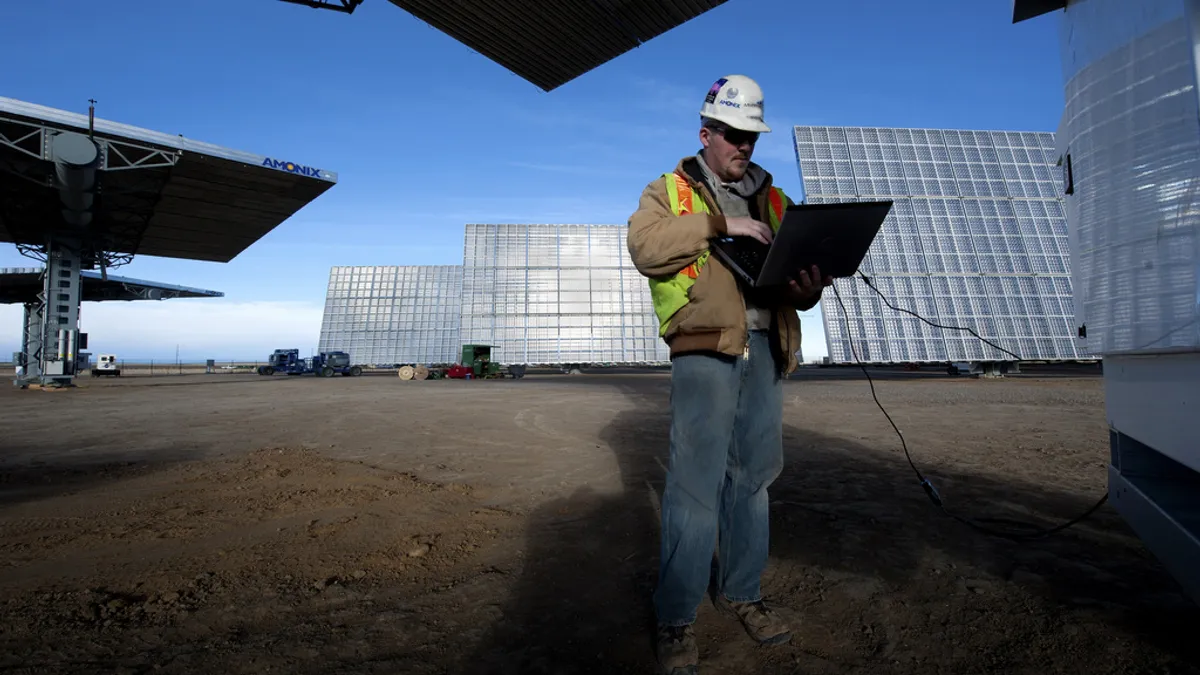A major force in the solar industry just sent a message to utility regulators—with an attachment.
The message: Solar can be part of the solution instead a part of the problem. The attachment: A Roadmap to where utilities and owners of distributed solar can partner in a shared and reliable grid.
“Both utilities and the solar industry have a lot to gain by collaborating on how to use the technology,” explained SunPower VP of Policy Tom Starrs of the basic intent in “Bridging the Divide: A Roadmap to Integrating Distributed Generation.” The Roadmap is the thinking “of most of SunPower’s strategic leadership,” Starrs said.
Sun Power is one of the vertically-integrated Big Four in U.S. solar, along with SolarCity, First Solar, and SunEdison. It is the second biggest U.S. module manufacturer, makes one of the highest efficiency mass-market modules in the world, has consistently ranked among leading installers in solar leasing, and supplied modules for the MidAmerican Energy-owned 579-megawatt Solar Star Projects, the world’s biggest utility-scale photovoltaic installation.
The premise in the roadmap, which was sent to state utility commissioners who are members of the National Association of Regulatory Utility Commissioners (NARUC) ahead of their annual meeting, is that the solar and utility industries must work together. “We all share a common interest in ensuring a reliable and resilient utility grid,” CEO Tom Werner pointed out in the cover letter.
“The PV industry is recognizing we can’t go it alone and finding ways to work with utilities instead of being antagonists is crucial to our long term success,” Starrs said. “And utilities are recognizing that PV, including distributed PV, is here to stay. Efforts to undermine it are not going to be successful anyway. They might as well find ways to work toward solutions with the industry.”
A shared understanding
Utilities are concerned that grid integration of distributed generation (DG) is eroding their ability to provide basic grid services and SunPower understands the concern, Starrs said, because utilities are among its key customers and because it must work closely with utilities on interconnections. But, he said, the right response to that concern is not to limit solar.
“The U.S. can have a strong, smart 21st century utility network in which solar power can reach its full potential while addressing grid integration concerns,” Werner wrote in the cover letter. “Achieving that goal will be extremely difficult, however, without a shared understanding.”
The Roadmap specifies 8 principles:
- Innovate alternative distribution utility business models and regulatory frameworks for cost effective deployment and management of distributed energy technologies with new smart tools that improve grid performance.
- Keep solar growing with net energy metering until solar penetration levels affect distribution utility fixed cost recovery or impose distribution system upgrade investments.
- When solar penetration rises, implement a gradual transition to new rate structures and service arrangements that send price signals that improve grid efficiency, reliability, and resilience.
- Develop transparent, predictable, and consistent rate structures and market services that allow customers the opportunity to adapt to them.
- While alternative rate structures are developed and implemented, minimum monthly bills are preferable to fixed charges as a way of ensuring that all customers contribute fairly to the costs of operating, maintaining, and improving the distribution system.
- Customers’ rights to acquire, deploy, own, operate, and interconnect behind-the-meter technologies, including energy efficiency and management, storage, and clean generation, must be protected.
- Interconnection of distributed generation should be streamlined with simple, uniform standards that protect the safety and reliability of utility networks and personnel.
- Distribution system operators should make public where grid upgrades will be cost effective and where distributed resources can be built without compromising reliability or imposing network infrastructure costs and reward those who relocate distributed generation accordingly.
Using the Roadmap
Starrs described two different kinds of issues that he says can be resolved by applying Roadmap principles.
One is the saturation of a local feeder system by high PV penetration. It isn’t widespread yet, he explained, but HECO, Hawaii’s electric utility, was forced to impose forceful interconnection constraints against the threat of outages earlier this year.
Another is the saturation of a system with PV. The California Independent System Operator’s infamous duck curve is a forecast of that possibility.
“The ISO is anticipating California will have too much solar on the grid in the middle of the day and not enough solar on the grid to meet the evening peak,” Starrs explained, and its suggested remedies are more gas-fired generation to firm and shape the renewables output, and more transmission to move power, including the new gas-fired generation, across broader regions.
The Roadmap points to solar being efficiently integrated using new technologies. “PV is the core technology,” Starrs said, “but storage is the game changing opportunity. And there are other new hardware and software tools.”
Smart inverters and smart transformers can prevent feeders from being saturated. Smart meters and smart charging systems can allow utility customers “to do demand response, to do load shifting, and to sell excess and stored solar generation into ancillary service markets.”
Stakeholders in Hawaii, including HECO, the Public Utility Commission, and the solar industry, could have and should have anticipated the penetration growth and worked together to create longer term solutions, Starrs said.
By contrast, California’s AB 327 is an example of forward-thinking. “It isn’t a law about what will be changed immediately. It is a law that proposed a 5-year plan and laid out a process to start creating solutions,” Starrs said.
High penetration issues are inconsequential while PV systems remain scattered, Starrs explained. But according to solar growth projections, solar penetration will rise and become consequential. “It is much better for us to develop solutions in advance rather than wait until problems become real,” he said.
The new attitudes and technologies envisioned in the Roadmap, Starrs said, can “enable PV system owners to become good citizens of the grid.”





















